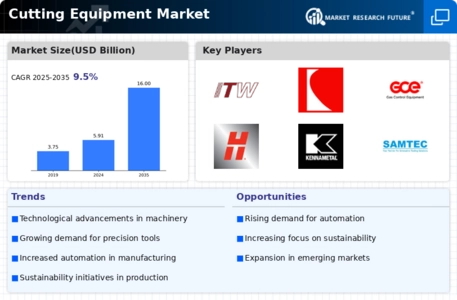Market Share
Cutting Equipment Market Share Analysis
Both the industrial machinery industry’s cutting equipment market and its strong competition compel firms to follow superior positioning strategies for their shares of markets. Methods include differentiation, where organizations highlight the special features and abilities of their cutting tools to distinguish themselves. This may include the use of state-of-the art technologies like laser or plasma cutting, which would increase precision and speed. By proposing something new companies can cultivate their target market and develop a dedicated clientele. Another approach is based on cost leadership strategy, where companies aim to provide cheaper cutting equipment without sacrificing quality. This strategy is particularly beneficial in price-sensitive markets where cost consciousness prevails. This strategy primarily focuses on economies of scale, production process optimisation and efficient purchasing. By pricing products and services competitively, businesses can acquire a major share of the market space that they are able to dominate against competitors. Market share positioning in the cutting equipment industry is critically driven by innovation. By constantly investing in research and development to introduce new innovations technologies, as well functionalities the companies can easily get competitive advantage. Innovation does not only lead to acquisition of new customers but also helps retain existing ones, because business look for sharp tools that equal industrial development. Continuously evolving product lines and leading the market in terms of technology can make a firm an industry leader. Location is another key element of market share strategies. Companies tend to direct their attention towards parts of the world or regions where there is a significant need for such cutting equipment. By acknowledging the needs of regions and adjusting products to meet these requirements, companies can create a powerful presence in those places. This could be via development of tools specific to sectors dominant in a region or manufacturing items that meet local requirements and guidelines. More common in the cutting equipment market are collaborative strategies including partnerships and alliances. Companies could also team up to leverage their strengths which include technical know-how, distribution channels or brand popularity. The market can be tackled more efficiently when businesses enter strategic alliances because they are able to achieve higher shares through the pooling of resources and capabilities. Secondly, customer-focused approaches play a significant role in effective market share positioning. As a result, understanding the needs and preferences of end-users assist companies in targeting their cutting equipment towards different industries or applications. Providing superior customer service, warranties and post-delivery support can further help in improving the brand image which helps to increase loyal customers.










Leave a Comment